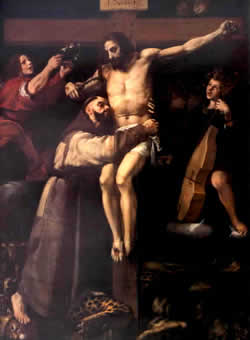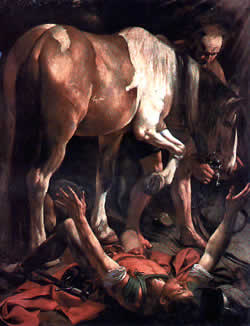
Francisco Ribalta, Saint Francis Embracing the Crucified Christ (about 1620) Valencia, Museo de Bellas Artes (208 x 167 cm)
Saint Francis' desire to be united with Christ is depicted in this painting as a mystical communion. In a moment of ecstasy Francis embraces the crucified Christ and brings his lips to the wound in order to taste the blood which is issuing from it. Accepting Francis' sensual yearning Christ removes his own crown of thorns and is about to place it on that of the saint. The impending consummation of Francis' erotic-mystical communion is further evidence of the importance of pain in the culture of the Baroque. Analogous to Bernini's depiction of Saint Teresa's impending perforation by Christ's (or Eros') arrow of love, Francis indulgently suffers the pleasure-pain paradox of the martyrdom of love.
